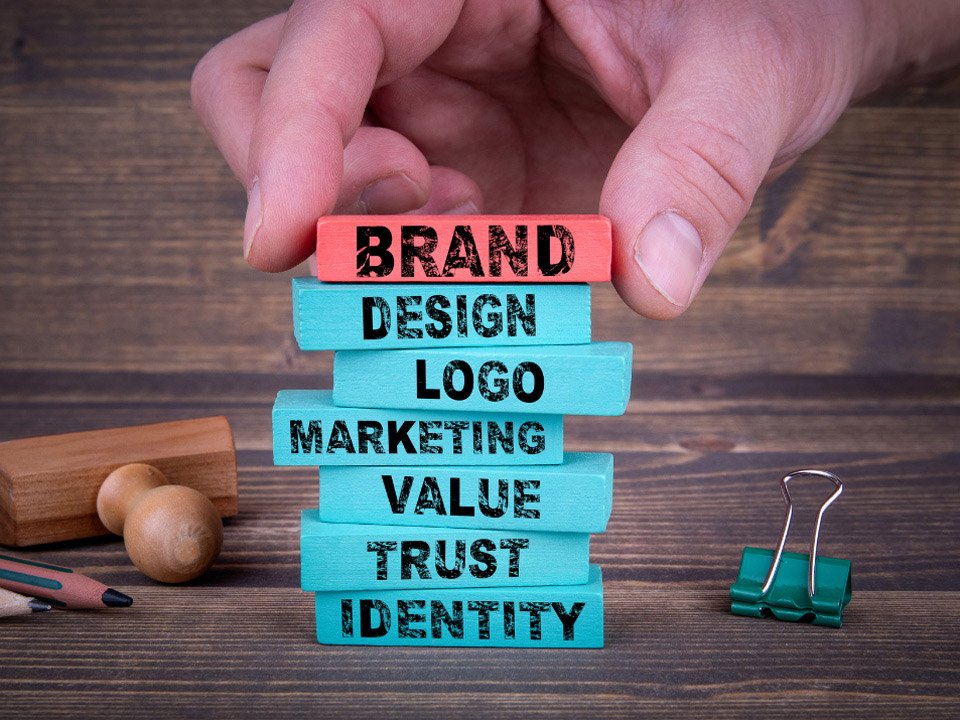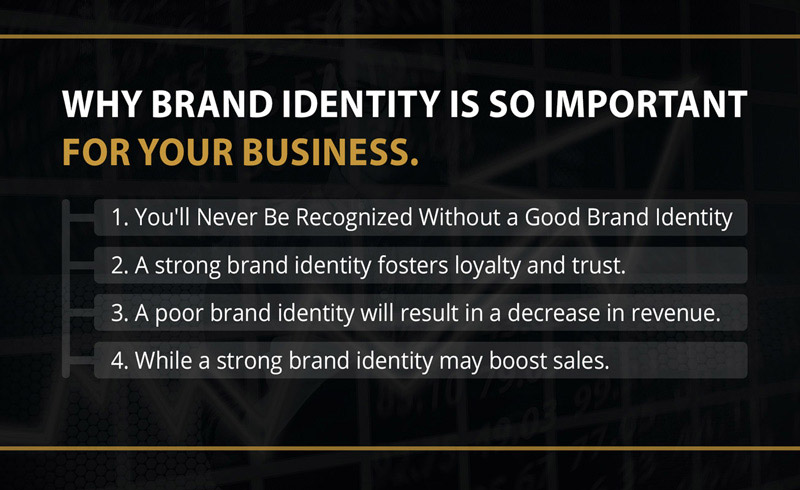
How To Develop A Brand – Top 5 Essentials You Need To Know
Similar to how your identity defines you, your brand identity is the secret sauce that distinguishes your firm from every other Tom, Dick, and Harry, Inc. on the street. And how about the design of your brand identity? It is what shapes your business.
However, what is brand identity? What relevance does this have to design? And how can you develop a powerful brand identity that propels your firm forward?
In this article, we will discuss all this but first, let’s kick start with brand identity.
What is Brand Identity?
The collection of all aspects that a firm generates to represent the correct image to its customers is known as brand identity. Even though these phrases are frequently used interchangeably, brand identity is distinct from “brand image” and “branding.”
What your brand says, your values, how you explain your product, and how you want people to feel when they connect with your firm make up your brand identity. Your brand identity is your company’s personality and a promise to your consumers.
Why do You Need to Create a Brand Identity?
1. You’ll Never Be Recognized Without a Good Brand Identity
Your logo design and colors are two essential elements in making your company instantly recognized.
Ikea’s blue and yellow, as well as Coca-distinctive Cola’s red, are well-known. When someone sees your color palette next to your logo, they should immediately know they’re looking at your company.
2. A Strong Brand Identity Fosters Loyalty and Trust.
Building a successful connection with consumers requires a robust and distinct brand identity. If consumers believe you and they have similar values, they will be drawn to your brand and more inclined to choose you over the competition.
3. A Poor Brand Identity will Result in a Decrease in Revenue.
Strong brand identity leads to enhanced brand recognition and awareness, which should assist boost word-of-mouth recommendations for your organization.
When your brand is top-of-mind for your consumers, they won’t hesitate to refer you to a friend – your company’s name will be the first thing that comes to mind!
4. While a Strong Brand Identity May Boost Sales.
Apple comes to mind almost instantly when one thinks about solid brand identity. Apple’s hefty price tag is a direct outcome of the company’s long-standing, dependable brand.
Apple can charge a premium price even though its goods are on par with the competition in terms of quality. Its interests are valued more than many other technology brands in the eyes of its consumers. This has a lot to do with how a company’s brand is perceived.
How to Create Brand Identity
The following steps will describe the way to create a strong brand identity for your business,
1. Do your Homework on Your Target Audience, Value Offer, and Competitors.
The first stage in developing a brand identity is market research, like any other component of beginning a company. These five points should be clarified and understood. They are, indeed.
Audience
It’s no secret that everyone has distinct desires. You can’t (generally) market a product to a pre-teen like you can to a college student. To build a brand that people would adore, you must first figure out what your audience wants from a company in your field.
Competition & Value Proposition
What distinguishes your company from others in your field? What do you have to offer your customers that no one else does? To build a great brand, you must first understand what sets you apart from your competitors. Observing your competition will teach you which branding methods work and don’t.
Mission
You know what your company does, but make sure you have a mission statement that explains your vision and objectives. In other words, understand the aim of your company – you can’t establish a personality for a company until you know what it’s all about.
Personality
Even if you aren’t technically branding an individual, being personal while building a brand image is still possible. Use font, colors, and pictures to convey the brand’s identity. Then add to that visual portrayal with your tone of voice: Are you, like Nike, a confident company with many sass? Or, like Givenchy, are you posh and polished? In any case, be sure to build your brand as a means to represent your company.
Although research might be tedious, the more you learn about your company, the better your brand identity will become.
SWOT (Strengths, Weaknesses)
Finally, a SWOT Analysis will help you get a deeper understanding of your brand. Consider the brand’s qualities to determine the traits you wish to represent in the brand.
2. Create a Logo and a Logo Template.
It’s time to bring your brand to life now that you know your company inside and out. Here are the items you’ll require:
Logo
Although the logo isn’t the whole brand identity, it is an essential aspect of the branding process since it is the most identifiable feature of your company. It’s on your website, business cards, and internet adverts, among other places.
Interesting form
As important as your logo is to branding, it isn’t the only factor contributing to an excellent brand identity. Your product(s), packaging, and how you display your services must all contribute to your brand identity. Consistency and familiarity with your customers may be achieved by visually reflecting your company in everything you do.
Color and Style
Creating a color palette is a great strategy to boost your brand. It gives you many options to come up with distinctive designs for your company while staying true to the brand’s identity.
Templates
You presumably write emails, compose messages, or pass out business cards to prospective consumers daily. Using templates (even for little details like email signatures) can help your company seem more united, believable, and professional.
Consistency
Consistency, as I’ve emphasized in practically every stage (and can’t emphasize enough), is what may build or destroy a brand identity. To develop a unified brand identity, use the templates above and stick to the design decisions you’ve made for your brand across all sections of your firm.
3. Use Language to Communicate, Market, and Represent Yourself on Social Media.
You’re ready to integrate your brand into your community now that you’ve developed your brand inside your firm and performed all of the essential measures to build it.
Language
Use terminology that reflects your brand’s personality. If your brand is high-end, use formal language; if it’s more laid-back, use conversational language. Because the language you use as a brand will be used across the company, it’s critical that you carefully develop your tone to reflect your brand’s personality.
Emotion & Connection
People are fascinated by tales. People like stories that make them feel something (emotionally and to action). A strong brand identity may help customers form an emotional connection with a company, serving as a solid basis for developing a long-term relationship.
Advertise
Whether conventional or digital, ad design is the most effective approach to introducing your business to the public. It’s ensuring that your target audience sees and hears your brand’s message.
The Internet and Social Media
Another excellent strategy to communicate with your customers is to use social media. Many digital real estates are available on the internet, and you can utilize them to develop your brand identity.
4. Know What to Stay Away From.
Even if you follow all of the stages of establishing a solid brand identity, your brand may falter or fail if you engage in the following behaviors.
- Don’t send mixed signals to your consumers.
- Don’t try to be like your competition.
- Maintain consistency between online and offline activities.
- Scale instead of sacrificing.
5. Keep an Eye on Your Brand to Ensure It Retains Its Personality.
It’s impossible to tell what you’re doing correctly (and what you’re not) without measuring critical performance measures, just as it is with other areas of your marketing.
Read more about PRINCIPLES OF EDITORIAL DESIGN FOR SUCCESSFUL BRANDING.
Monitor your brand using Google Analytics, polls, comments, social media debates, and other methods to see how people speak about and connect with you. This will allow you to make adjustments to your brand as required, whether to repair a mistake or better your brand identity.
Lastly, creating a brand identity is a path that every business needs to figure out for themselves. Find out what best describes your business and how you can portray this to your customers.



